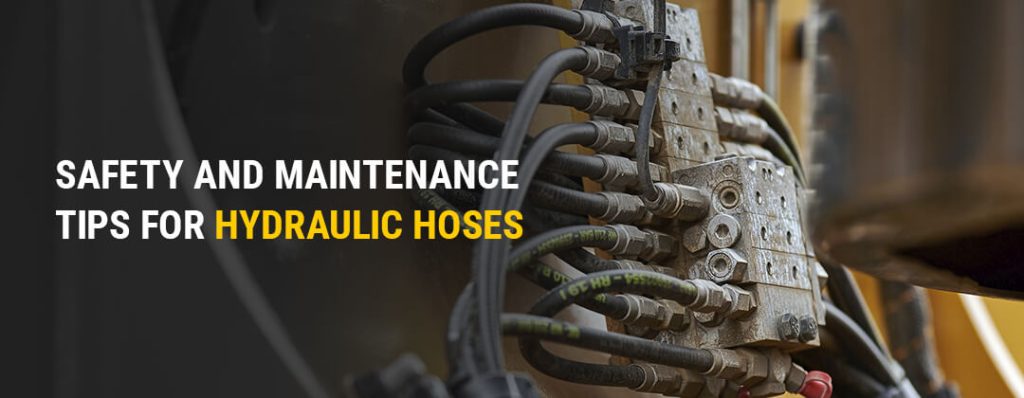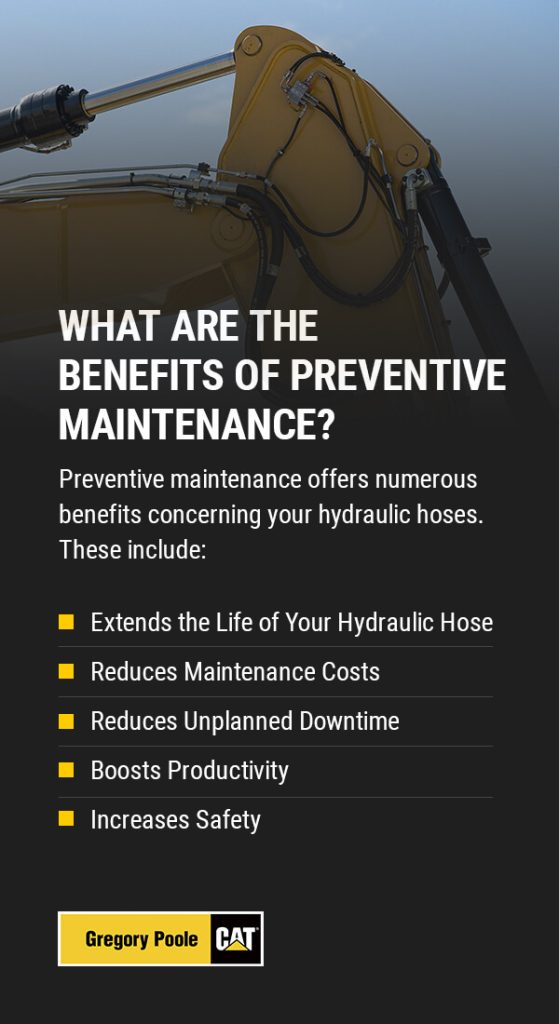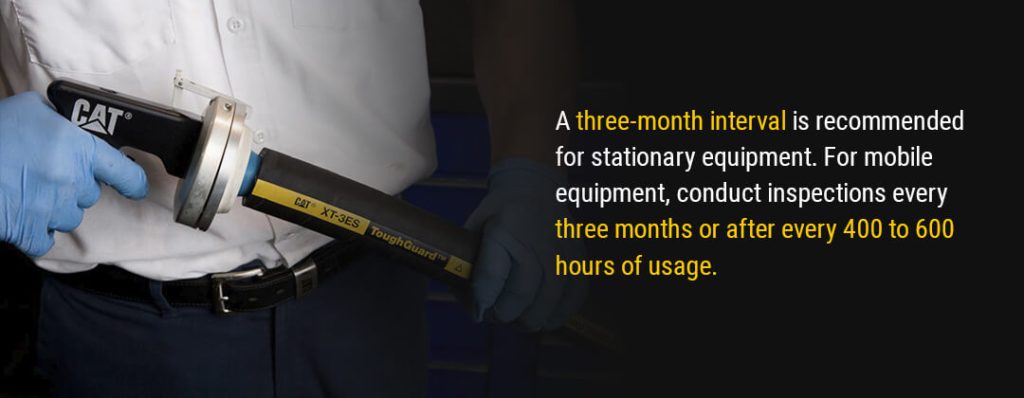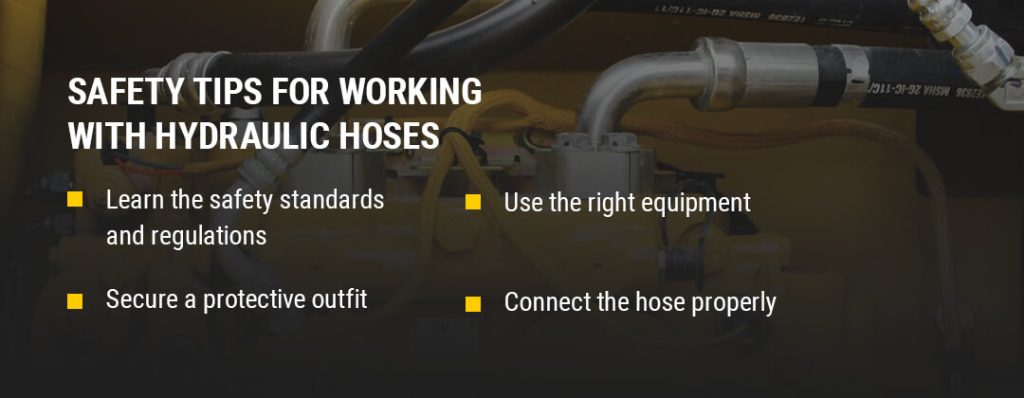
A good understanding of the hydraulic system requires you to be close to an expert in hydraulic hoses. Hydraulic hoses are vital components of the system — when they fail, your entire operation will grind to a halt.
It’s usually best to have a reliable solutions provider focusing on your business’ growth. Gregory Poole offers only the best hydraulic services across various industries, and we’re committed to helping you succeed. That’s why we’ve put together this comprehensive guide about the safety and maintenance of hydraulic hoses.
Preventive maintenance has proven to be the most effective approach to maintaining facilities, and the same applies to hydraulic hoses. But before we consider the specific benefits it offers, let’s answer an important question — what’s preventive maintenance?
Preventive maintenance means conducting regularly scheduled maintenance on your facilities, tools and equipment to avoid unexpected failures. In simple terms, preventive maintenance is fixing things before they break. There are different types of preventative maintenance, including:

Preventive maintenance offers numerous benefits concerning your hydraulic hoses. These include:
Reactive maintenance reduces the life expectancy of a hydraulic hose. The more you use the hydraulic system, the more the parts deteriorate. When you allow your machines to get damaged before attempting to bring them back to life, there’s a meager chance of success. Preventive maintenance helps you avoid such situations.
Periodic and regular maintenance reduces the parts’ wear rate. This is because they’re always in good condition. For instance, when you periodically check your hose for leaks, you can quickly detect and fix defects. Usually, failures in machine parts create a ripple effect — one of the most common causes of hydraulic leaks. Preventive maintenance breaks that chain, allowing you to use them for long periods before finally deciding to replace or upgrade them.
Emergency unplanned maintenance costs three to nine times more than preventive maintenance. This is a significant margin in corporate financial management.
Unplanned maintenance forces you to pay multiple service charges. Alternatively, preventive maintenance allows you to use one maintenance session to take care of several issues. Moreover, reactive maintenance exposes you to inflation. An integral part of preventive maintenance is the bulk purchase of components, which protects you against price increases.
Preventive maintenance also reduces transportation costs for maintenance. For instance, when your equipment breaks down, you may be required to transport them for repairs. Besides purchasing new parts and components, you’re likely to incur shipping expenses.
Statically, predictive maintenance reduces downtime by 45% and breakdowns by 75%. With predictive maintenance, companies pay attention to the mean time between failures (MTBF), a common key performance indicator (KPI) utilized by leaders in several industries in making informed maintenance decisions.
Preventive maintenance allows you to schedule procedures convenient to your business operations. For example, you can conduct maintenance after working hours when it’s less likely to affect your projects.
Preventive maintenance boosts your business’s overall productivity. We can simplify this into three categories:
Preventive maintenance is an excellent way to comply with the safety standardsrequired in various industries. Even in the absence of compliance standards, ensuring the safety of your employees is necessary. Accurate tracking and regular maintenance allow you to identify potential machine failures that likely cause injuries. Preventive maintenance can help reduce the number of casualties occurring within the sector.

A three-month interval is recommended for stationary equipment. For mobile equipment, conduct inspections every three months or after every 400 to 600 hours of usage. These timelines may, however, change due to several factors. For instance, you should inspect hoses used in high operating temperatures or those involved with critical equipment more frequently. This allows you to identify defects on time and helps you prevent significant failures.
The life expectancy for hydraulic hoses is between one and two years, though some can last up to 10 years. However, the duration can be affected by external factors such as temperature, chemical compatibility or using a hose not rated for the operating pressure.
For instance, when the hose has contact with other components at high temperatures, this can cause an otherwise good hose to wear. Similarly, when chemical components such as hydraulic fluid or other external chemical components, oil and grease are incompatible with the tube material, it can compromise the integrity of the hose.
It’s crucial to learn how to inspect a hose. To know if your hydraulic hose is about to fail, take note of the following:
You can identify most of the leaks by visual inspection. Take the following steps to correctly and safely inspect the hydraulic hose for leaks:
Avoid using your hand to check for leaks. Hydraulic fluid can move under high pressure, between 1,000 and 3,000 pounds per square inch (psi) which can cause harm. Wear gloves, long sleeves and safety glasses. Contact an expert to assist you if you have little experience handling hydraulic systems.
Consider the following to keep your hydraulic hose from cracking:
High-pressure hydraulic hoses can pose serious risks, including:
To prioritize safety, it is crucial to only engage with your hydraulic system when you have the necessary skills and equipment. Regularly inspect hoses for signs of wear or damage, and be prepared to detect and anticipate failures to prevent accidents and conduct repairs.
Ensuring proper maintenance extends your hydraulic hose’s life span and improves workplace safety. Follow these quick guidelines:

Beyond the tips for safely operating heavy equipment in general, it’s important to learn those specific to hydraulic hoses.
There are a few instances where you’ll need to attach hoses before seeking professional assistance. Here is a step-by-step guide to help you:
There are different hydraulic hoses with unique minimum pressures for a single device. Determine the operational requirements for the hose for the equipment. Do thorough research to be sure that the product you choose is durable and reliable. The last thing you need is to waste money and risk your employees’ safety.
Cut out the damaged area of the tubing. If the coupling at the end of the hose is leaking, remove the broken end. Clean the area around the cut thoroughly of dirt, dust and other particles. Such contaminants could damage the internal components.
A hydraulic adapter is sometimes required to complete the installation process. Adapters are helpful in situations where you don’t have the right hydraulic coupling type. Tighten the adapters properly in the appropriate ports and check if the connection is secure.
Confirm the length of the hose and route the hose correctly to prevent additional pressure and fatigue. The length should allow for proper laying according to the manufacturer’s guidelines. Hydraulic systems operate under high pressure and an incorrect hose length can lead to failures.
Small gaps in the seal can cause challenges in the hydraulic system. Check for leaks before using the machine. The aim is to keep the hose secure, not overly tighten the gasket. Tighten the fitting with a wrench to keep the hose from twisting.
Circulate the hydraulic fluids or oil at low pressure and check for any leakages. This is a safe and straightforward way to check for leaks, and it also flushes out the remaining air. Allow the system to run for a few minutes and use a cardboard or sheet of paper to inspect for leakages. Replace the damaged hose immediately before using the machine.

Hydraulic systems are crucial in all industrial processes to the extent that a faulty hydraulic hose has the potential to stall or completely halt operations. For this reason, it’s vital to maintain the component periodically and replace all damaged parts. When choosing a partner to assist you with your industrial needs, consider one that holds high standards and offers only the finest services.
Gregory Poole is a full-service hydraulic solutions provider with over 70 years of experience in the industry. We pride ourselves on quick turnaround times and pay close attention to your needs. Contact us today and take advantage of our reliable and supportive services.